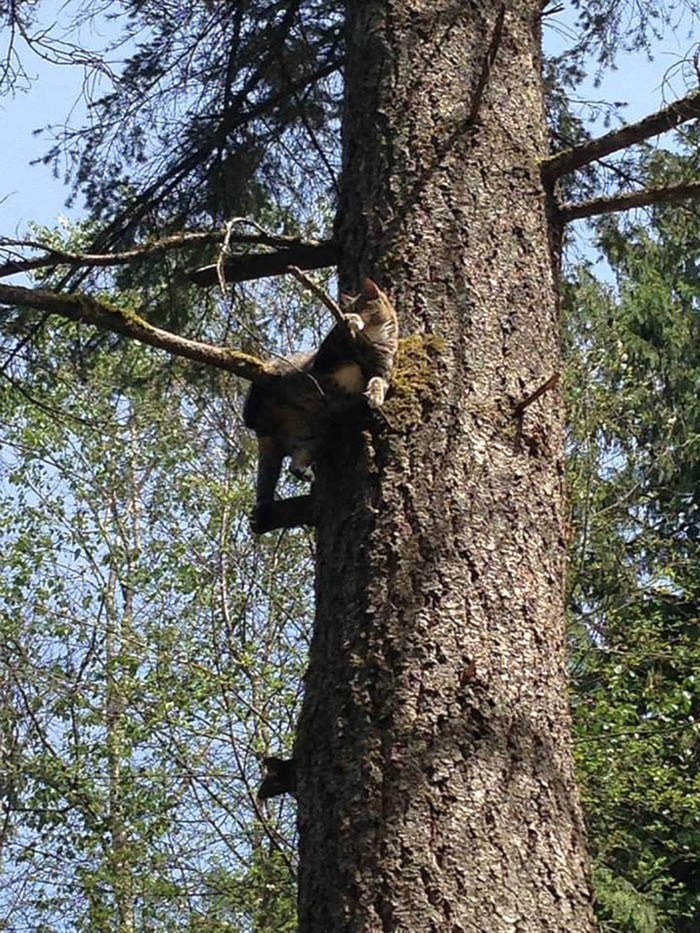Call it a myth, an old wives tale, or simply a common misconception, but a cat who climbs a tree may not always be able to get back down.
At our cat shelter, we sometimes get calls about a cat who is stranded in a tree. If possible, we send out our volunteers to retrieve the cat, if not, we turn to social media for help.
Each time there is at least one or two people who say, ‘Leave it alone. When it gets hungry, it will come down.’
Unfortunately, that is not always the case.
Some timid, fearful, nervous or anxious cats may end up high in the branches of a tree with no courage to come back down. Even brave, outgoing cats may find themselves too high up to even consider coming down.
Cats have curved claws and strong back legs that enable them to climb a tree with no issue at all. They are definitely amazing climbers.
However, when it comes to making their way back down, the same is not true. Those curved claws and strong back legs are of no assistance when the cat is trying to climb down. The only way for a cat to descend the tree is to back its way down, or jump.
Backing down is very awkward and challenging for a cat, and jumping down only works if the cat is on a lower branch. No cat will hurl itself to the ground from a branch that is 50 feet up, no matter how hungry it is.
This is where we encounter the next issue. Cats can only go so long without food before they develop fatty lipidosis, or liver failure. Fat cells stored in the body are metabolized for energy when an animal goes without food for an extended period of time. Fat is packaged with protein and sent through the bloodstream to the cells in the body.
If an animal is not eating, the protein becomes unavailable and the fat builds up in the liver, disrupting liver function. This, in turn, makes the cat lose interest in food altogether as it begins to feel ill.
On average, lethal liver failure can develop in a cat anywhere from two to 10 days. Heavy, older cats will develop liver failure quicker than thin, skinny felines. So if a cat is in a tree for over two days, there is a chance that liver failure has set in, the cat has lost interest in food, and there is no motivation for it to come down.
Unfortunately, some cats are not vocal when they get stuck and it may be a few days before anyone realizes they are even there. Liver failure can lead to death, and even if the cat survives, organ damage is common.
The other myth or misconception is that the fire department will respond to ‘cat in tree’ calls. They do not. Unless a human has climbed up the tree to save the cat, and become stuck himself, the fire department will not respond.
We have found that, other than our own volunteers, the most sympathetic and helpful cat rescuers have been tree trimmers. They have the proper equipment and expertise to climb tall trees.
If you do see a cat stuck in a tree, please call any of the local rescues. If we can’t help, we will definitely find someone who can.
– By Magdalena Romanow, a volunteer a Katie’s Place animal shelter.
